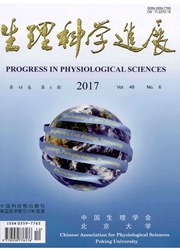

 中文摘要:
中文摘要:
催乳素(PRL)由脑垂体及某些垂体外组织器官如乳腺、泪腺、子宫、胸腺和脾脏等所分泌。由于其与生长激素(GH)及胎盘泌乳素(PL)等的结构及功能近似,因而多数意见认为PRL、GH及PL的基因由同一个祖基因复制而来。PRL以内分泌、旁分泌及自分泌的方式与靶细胞膜表面的催乳素受体(PRL receptor,PRLR)结合而发挥非常广泛的生物学作用。催乳素受体分为长受体(LF)、中受体(IF)及短受体(SF1a及SF1b)。不同催乳素受体由同一基因编码,经转录后选择性剪接而生成。由于膜内区不同,不同催乳素受体所介导的生物学作用不同。大量证据表明,催乳素受体的异常,如长、短比例失调或受体的氨基酸序列变异与某些肿瘤尤其是乳腺癌的发病及预后等有密切的关联。设计催乳素受体拮抗剂以阻断催乳素的某些生物学作用对治疗与催乳素有关的肿瘤如乳腺癌等具有重要的临床应用前景。
 英文摘要:
英文摘要:
Abstract: Prolactin (PRL) is secreted by lactotrophs in the anterior pituitary and some extra -pituitary tissues such as breast, lacrimal gland, uterus, thymus and spleen, etc. Since PRL is closely related to growth hormone (GH) and placental lactogens (PL), it has been broadly accepted that PRL, GH and PL are resulted from the duplication of an ancestral gene. PRL regulates hundreds of biological functions by endocrine, paracrine and autocrine manners. Prolactin initiates its effects by binding to its receptor (PRLR). PRLR belongs to the class I cytokine receptor superfamily. Up to now, three membrane- PRLRs have been clarified. They are long form (LF) , intermediate form (IF) and short form (SF) including SFla and SFlb. All PRLRs are derived from a primary transcript of common gene through alternative splicing mechanism. Although the extracellular domain (ECD) and the transmembrahe domain (TD) of LF, IF and SF are equal, different isoforms of PRLR exert different function through different intracellular domain. It has been well documented that abnormity of PRLR is closely related to the pathogenesis, progression and prognosis of cancers including breast cancer. Several PRLR antagonists have been well designed and evidenced to have the potential to be important therapeutics.
 同期刊论文项目
同期刊论文项目
 同项目期刊论文
同项目期刊论文
 ·Expression of a constitutively active prolactin receptorcauses histone trimethylationof the p53 gen
·Expression of a constitutively active prolactin receptorcauses histone trimethylationof the p53 gen Tan DY,Chen KHE, Deng C, Tang P, Huang J, Mansour T, Luben RA, Walker AM. An N-terminal splice varia
Tan DY,Chen KHE, Deng C, Tang P, Huang J, Mansour T, Luben RA, Walker AM. An N-terminal splice varia Histone Trimethylation of P53 Gene by Expression of a Constitutively Active Prolactin Receptor in Pr
Histone Trimethylation of P53 Gene by Expression of a Constitutively Active Prolactin Receptor in Pr Blockade of estrogen-stimulated proliferation by a constitutivelyactive prolactin receptor having lo
Blockade of estrogen-stimulated proliferation by a constitutivelyactive prolactin receptor having lo Histone 3 Trimethylation of IGFBP-7 Gene Promoter by Expression of D5 Stat5a in Breast Epithelial Ce
Histone 3 Trimethylation of IGFBP-7 Gene Promoter by Expression of D5 Stat5a in Breast Epithelial Ce 期刊信息
期刊信息
